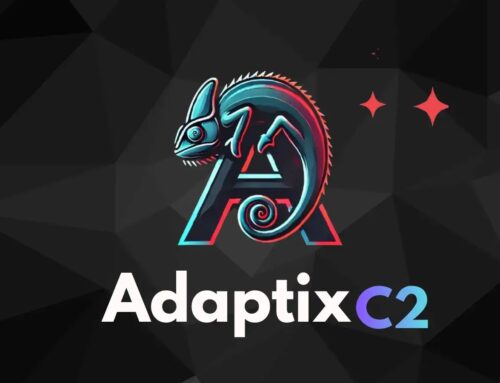
GOLD SALEM Compromise Networks and Bypass Security Solutions to Deploy Warlock Ransomware
Unmasking GOLD SALEM: The Warlock Group’s Ransomware Onslaught
The cybersecurity landscape has recently been shaken by the emergence of GOLD SALEM, an aggressive new threat actor group also known as the Warlock Group. This sophisticated collective has been actively compromising enterprise networks since March 2024, deploying their potent Warlock Ransomware. Their operations have already impacted a significant number of organizations, signaling a concerning escalation in ransomware tactics and effectiveness.
GOLD SALEM’s Reach and Tradecraft
Since its inception in March 2024, a mere handful of months, the Warlock Group has successfully targeted over 60 organizations. Their victims span across North America, Europe, and South America, demonstrating a global reach and a well-coordinated attack infrastructure. This widespread impact underscores their developed tradecraft and their ability to bypass diverse security solutions.
The agility with which GOLD SALEM has established such a strong foothold in a relatively short period indicates a highly skilled and well-resourced operation. Their ability to consistently penetrate and compromise networks suggests a repertoire of advanced persistent threat (APT) techniques, ranging from sophisticated phishing campaigns to exploiting previously unknown or unpatched vulnerabilities.
Understanding Warlock Ransomware Operations
Warlock Ransomware, the payload of choice for GOLD SALEM, is not merely another variant. The group’s competent tradecraft implies a multi-stage attack methodology often involving:
- Initial Access: Gaining entry through various means, including exploiting unpatched vulnerabilities (though specific CVEs are yet to be clearly attributed to their initial access vectors), supply chain compromises, or targeted social engineering.
- Lateral Movement: Navigating internal networks to elevate privileges and gain access to critical systems and data. This often involves exploiting common misconfigurations or weak credentials.
- Data Exfiltration: Prior to encryption, GOLD SALEM likely engages in data exfiltration to maximize leverage and pressure victims into paying the ransom, a common tactic in modern double-extortion ransomware operations.
- Encryption and Ransom Demand: Finally, deploying the Warlock Ransomware to encrypt critical files and systems, followed by a ransom demand, typically in cryptocurrency.
Remediation Actions and Prevention Strategies
Protecting against sophisticated groups like GOLD SALEM requires a multi-layered and proactive cybersecurity posture. Organizations must prioritize robust defenses to mitigate the risk of Warlock Ransomware deployment.
- Patch Management: Implement a rigorous patch management program. Ensure all operating systems, applications, and network devices are kept up-to-date with the latest security patches. While specific CVEs exploited by GOLD SALEM are not yet broadly publicized, a proactive patching strategy significantly reduces the attack surface.
- Strong Authentication: Enforce strong, unique passwords for all accounts and implement Multi-Factor Authentication (MFA) everywhere possible, especially for remote access, privileged accounts, and critical systems.
- Network Segmentation: Segment networks to limit lateral movement. If an attacker gains initial access, network segmentation can significantly restrict their ability to spread across the entire infrastructure.
- Endpoint Detection and Response (EDR)/Extended Detection and Response (XDR): Deploy and properly configure EDR or XDR solutions to continuously monitor endpoints for suspicious activity, allowing for early detection and response to potential compromises.
- Regular Backups: Maintain frequent, air-gapped, and immutable backups of all critical data. Test backup restoration regularly to ensure data recoverability in the event of a successful ransomware attack.
- Security Awareness Training: Educate employees on identifying and reporting phishing attempts, suspicious emails, and social engineering tactics. Human error remains a significant factor in successful breaches.
- Incident Response Plan: Develop and regularly test a comprehensive incident response plan. This plan should detail the steps to take before, during, and after a cybersecurity incident, including ransomware attacks.
Recommended Security Tools and Resources
Leveraging appropriate tools is crucial in detecting and preventing sophisticated threats like Warlock Ransomware.
| Tool Name | Purpose | Link |
|---|---|---|
| CISA’s Cybersecurity & Infrastructure Security Agency (CISA) Resources | General cybersecurity guidance, alerts, and best practices. | https://www.cisa.gov/ |
| NIST Cybersecurity Framework | Guidance for reducing cybersecurity risks. | https://www.nist.gov/cyberframework |
| Endpoint Detection and Response (EDR) Solutions (e.g., CrowdStrike Falcon, SentinelOne) | Advanced threat detection, prevention, and response on endpoints. | [Vendor Specific Links – e.g., https://www.crowdstrike.com/] |
| Vulnerability Management Solutions (e.g., Tenable.io, Qualys) | Scanning and managing vulnerabilities across the network. | [Vendor Specific Links – e.g., https://www.tenable.com/] |
| Multi-Factor Authentication (MFA) Solutions (e.g., Okta, Duo Security) | Adding an extra layer of security to user authentication. | [Vendor Specific Links – e.g., https://www.okta.com/] |
Key Takeaways for Enterprise Security
The emergence of GOLD SALEM, or the Warlock Group, and their deployment of Warlock Ransomware presents a clear and present danger to global enterprises. Their rapid expansion and demonstrated competence highlight the need for organizations to move beyond basic security measures. Proactive vulnerability management, robust threat detection capabilities, and a well-rehearsed incident response plan are no longer optional, but essential for safeguarding networks against such determined and sophisticated adversaries.





